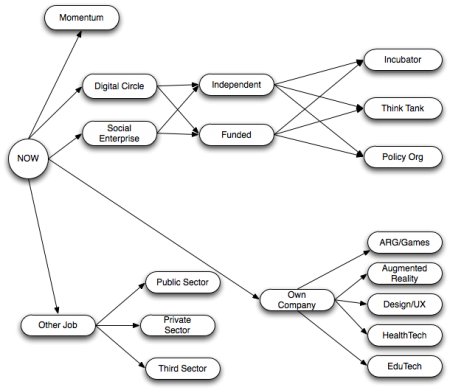There’s a group of companies here in Northern Ireland who are focused on the growing educational technology market. Educational technology is, for most part, just the application of general technology to the education market without necessarily the grounding of technology with pedagogy or learning. Technology manifests as tools, as a medium and as a network. … Continue reading “Musing about Learning and Teaching Technology”
There’s a group of companies here in Northern Ireland who are focused on the growing educational technology market.
Educational technology is, for most part, just the application of general technology to the education market without necessarily the grounding of technology with pedagogy or learning. Technology manifests as tools, as a medium and as a network. We might use Photoshop to teach a certain skill, we might populate a wiki, blog or other content management system in order to store and record or we might use email or instant messenger to communicate – but none of these have any specific pedagogical or learning purpose.
I suppose the difference is whether you are using the technology to teach as opposed to teaching about the technology.
Some of the ideas I have regarding ‘educational’ technology are certainly in the tools, media and networks areas. Tools to inform parents of progress, new methods to deliver established content and the development of peer groups beyond the school all fit into these neat categories.
Applying game reward principles to learning and teaching is an enhancement that I can’t accurately describe in the context above. While the tools may be the browser or the iPad, the medium may be the web or dedicated apps (with graphics, sound, video) and the network may be the reporting of achievements (either to the peer group, the teacher or the parents), the process of matching the query to the answer, the process of imparting the techniques for research and the striving for success will be part of the pedagogical delivery.
During my schooling, knowledge was analog. It was written in books, passed on through a formalised oral tradition and collected in condensed form for schools. This meant that if you wanted to know something, you had to visit a library, open a book, ask a teacher. The answer would be both “best effort” and also subject to the local bias of a region. To find out any depth of information, you had to be truly curious. Today, the search for knowledge has become trivial. A tool (the browser) used to access a medium (like Wikipedia) across a network (the Internet) brings the knowledge of the largest encyclopedias into reach of the most casual researcher. For depth, for interest, however, we have to rely on the innately curious; the quality of wanting to know more than your peers, to become excellent at something.
We have to develop the learning and teaching curriculum to create curiosity for the curious will inherit the earth.





